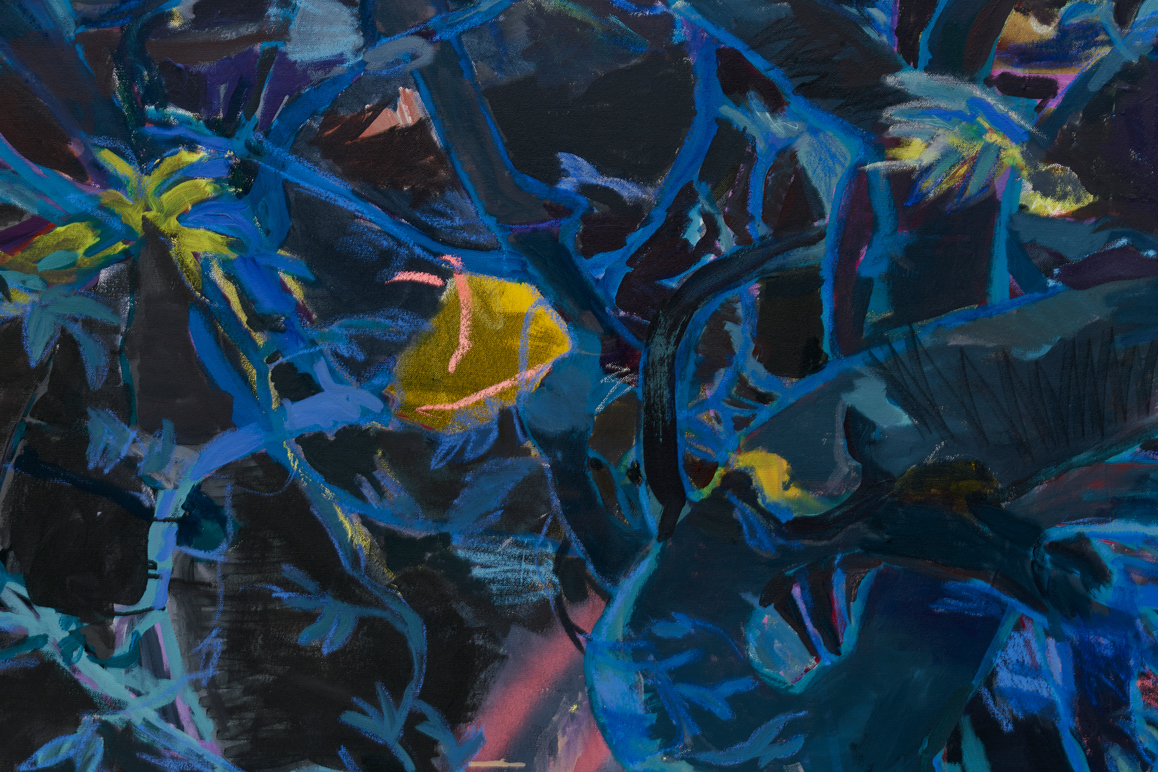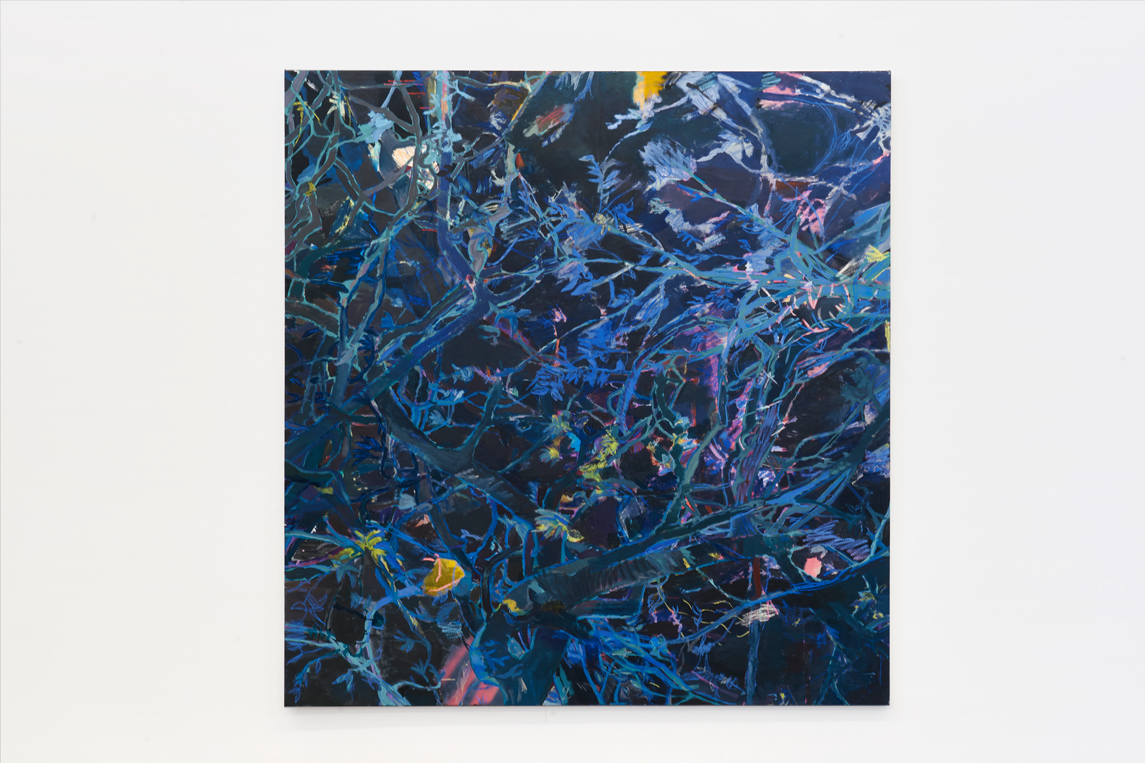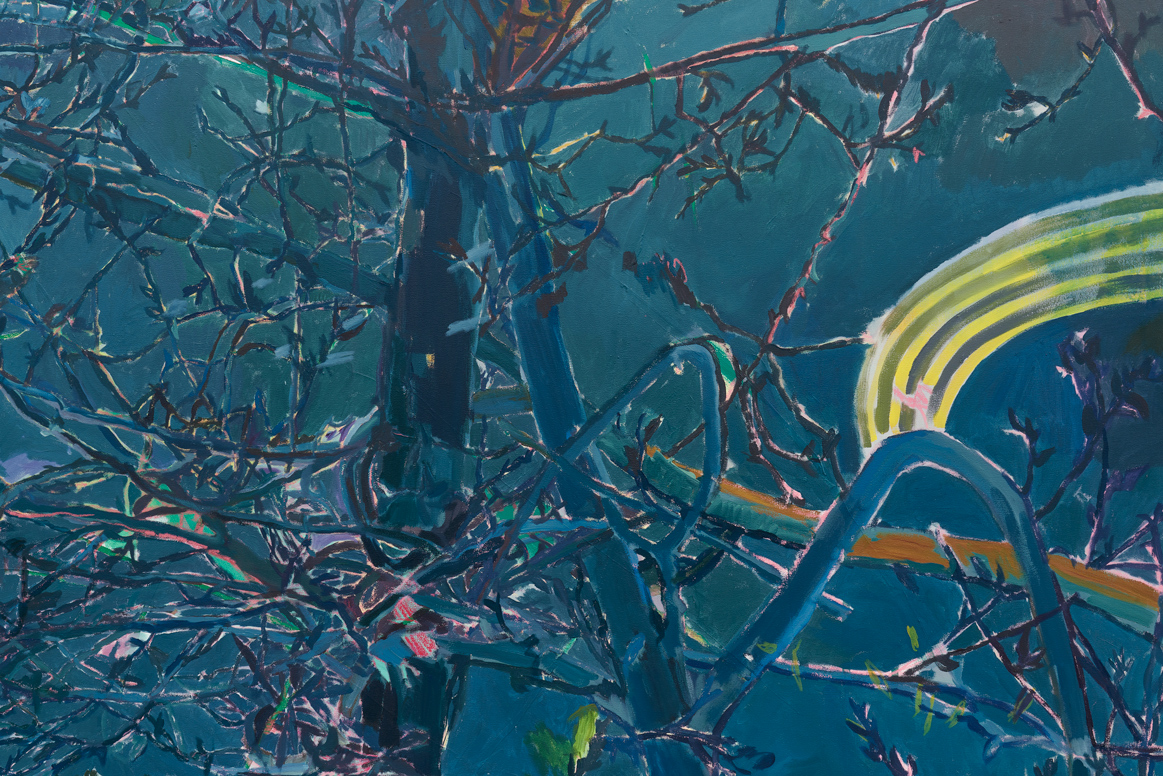















the secret harpist
takes a cup, moves to the side.
kneels by the curbstone, with a mat. washes the area.
takes off his top. prepares a bed. drinks as much water as she can.
wonders about the weight of Sundays. why some days feel light.
collects bricks from the lake. at night the neighbor moves.
thinks he was in the sun for too long. a slight headache.
sits on the swing next door. counts trees.
talks to the tree feller in the morning.
sits by what is called the holy land, locked like a courtyard
between other buildings. spits on the ground. wonders about
the things that turn, moral law, celestial bodies,
bodies on the road.
watches the sun set earlier, a fast passage.
sees how they shore their hearts, in the room next door.
knows the length of a shoulder, how you hold yourself.
when asleep, small movements of two breaths.
holds council by the entrance. carries a sick bird, a human.
says I saw you before. says those
with their wishes on their sleeves, who leave early.
later, writes with charcoal on columns under the highway.
For the past three years Kreutzfeldt has been working on a series of paintings with the motif of a ‘night tree’. ‘They began as slow compositional improvisations on near square canvases, based on photographs of the same tree. The photographs were projected onto the surfaces, then traced, erased, re-projected and repainted. The size of the canvases are set by the height of standard doors, referencing how one enters or exits spaces, interiors and exteriors. With the repetition of the same motif, the paintings cite the location of a tree in a garden in Johannesburg, an actual place at different moments in time – and with it invoke the distinct coordinates of a place tied to its fraught heritage, daily intensities and sense of a precarious future. Daily rhythms were profoundly disrupted, as well as augmented, through the global pandemic and phases of lockdown.
Initially conceived of as formal studies, the paintings work the surface between perception and abstraction, the absence of horizon unsettling the idea of a rendered, known space. They propose visual inversions, forms emerging and receding into non-forms and densities; operating somewhere at the border of what is perceptible or not, the question of being in this world, edges of sanctity, sanity and illness. The paintings became a sideways mode of returning to the same image, working from lighter planes to darker shades, rendering branches and leaves into an exchange of spatial or bodily figures. Painting approached as a form of notetaking, the work evolved concurrent to the diarising of news, their partial histories, the emptying of streets at night, voices, the anatomy of vision out of place.’
To Pathik, who earlier this year sent me a playlist named ‘the secret harpist’.
—
Dorothee Kreutzfeldt (b.1970, Windhoek, Namibia) is based in Johannesburg. Her interest in urban structures and their embedded socio-political histories and imaginations have informed her paintings, research and collaborations over the last twenty years. The city of Johannesburg has played a central role in her life and work, and continues to anchor questions around how the city crafts, undermines and explodes the experiences of time, space and subjectivity. Previous solo shows include City without a sun (2018); Extensions to the Lot Line (2017); At Present, (2015); and The Immanent Inauguration of the 5th Corner (2010) at blank projects, and HERE WE (2016) at Room Gallery & Projects in Johannesburg. In 2013 she co-authored the book Not No Place, Johannesburg: Fragments of Spaces and Times with Bettina Malcomess. Concurrent to her artistic practice and travels, Kreutzfeldt lectures at the Wits School of Arts where she is working towards a PhD.
exhibition press:
Munnik, G. Wonders about the weight of Sundays: Dorothee Kreutzfeldt’s ‘the secret harpist’. Artthrob (published 15 November 2022)
takes a cup, moves to the side.
kneels by the curbstone, with a mat. washes the area.
takes off his top. prepares a bed. drinks as much water as she can.
wonders about the weight of Sundays. why some days feel light.
collects bricks from the lake. at night the neighbor moves.
thinks he was in the sun for too long. a slight headache.
sits on the swing next door. counts trees.
talks to the tree feller in the morning.
sits by what is called the holy land, locked like a courtyard
between other buildings. spits on the ground. wonders about
the things that turn, moral law, celestial bodies,
bodies on the road.
watches the sun set earlier, a fast passage.
sees how they shore their hearts, in the room next door.
knows the length of a shoulder, how you hold yourself.
when asleep, small movements of two breaths.
holds council by the entrance. carries a sick bird, a human.
says I saw you before. says those
with their wishes on their sleeves, who leave early.
later, writes with charcoal on columns under the highway.
For the past three years Kreutzfeldt has been working on a series of paintings with the motif of a ‘night tree’. ‘They began as slow compositional improvisations on near square canvases, based on photographs of the same tree. The photographs were projected onto the surfaces, then traced, erased, re-projected and repainted. The size of the canvases are set by the height of standard doors, referencing how one enters or exits spaces, interiors and exteriors. With the repetition of the same motif, the paintings cite the location of a tree in a garden in Johannesburg, an actual place at different moments in time – and with it invoke the distinct coordinates of a place tied to its fraught heritage, daily intensities and sense of a precarious future. Daily rhythms were profoundly disrupted, as well as augmented, through the global pandemic and phases of lockdown.
Initially conceived of as formal studies, the paintings work the surface between perception and abstraction, the absence of horizon unsettling the idea of a rendered, known space. They propose visual inversions, forms emerging and receding into non-forms and densities; operating somewhere at the border of what is perceptible or not, the question of being in this world, edges of sanctity, sanity and illness. The paintings became a sideways mode of returning to the same image, working from lighter planes to darker shades, rendering branches and leaves into an exchange of spatial or bodily figures. Painting approached as a form of notetaking, the work evolved concurrent to the diarising of news, their partial histories, the emptying of streets at night, voices, the anatomy of vision out of place.’
To Pathik, who earlier this year sent me a playlist named ‘the secret harpist’.
—
Dorothee Kreutzfeldt (b.1970, Windhoek, Namibia) is based in Johannesburg. Her interest in urban structures and their embedded socio-political histories and imaginations have informed her paintings, research and collaborations over the last twenty years. The city of Johannesburg has played a central role in her life and work, and continues to anchor questions around how the city crafts, undermines and explodes the experiences of time, space and subjectivity. Previous solo shows include City without a sun (2018); Extensions to the Lot Line (2017); At Present, (2015); and The Immanent Inauguration of the 5th Corner (2010) at blank projects, and HERE WE (2016) at Room Gallery & Projects in Johannesburg. In 2013 she co-authored the book Not No Place, Johannesburg: Fragments of Spaces and Times with Bettina Malcomess. Concurrent to her artistic practice and travels, Kreutzfeldt lectures at the Wits School of Arts where she is working towards a PhD.
exhibition press:
Munnik, G. Wonders about the weight of Sundays: Dorothee Kreutzfeldt’s ‘the secret harpist’. Artthrob (published 15 November 2022)